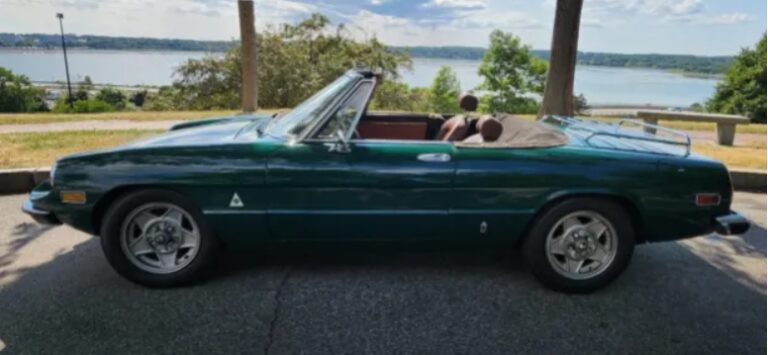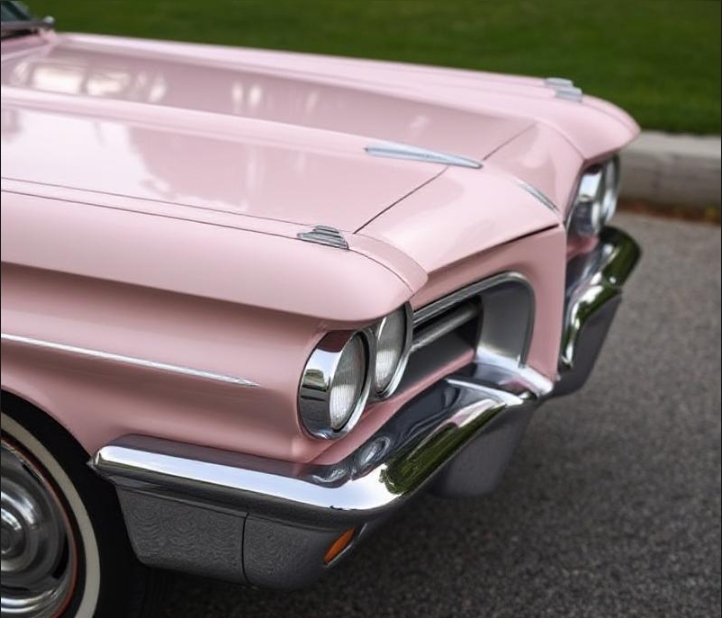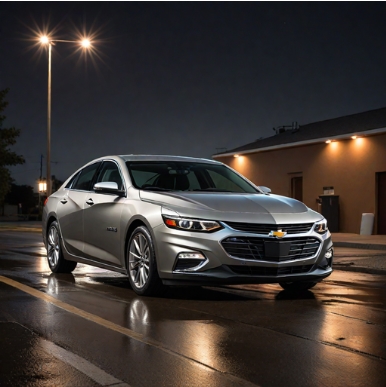The Angular Enigma: Charting the Evolution of Ferruccio Lamborghini’s Favorite GT, the Jarama
In the sprawling, dramatic history of Automobili Lamborghini, certain models cast impossibly long shadows. The revolutionary Miura, with its transverse mid-mounted V12, birthed the modern supercar. The outrageous Countach, a doorstop wedge from another dimension, adorned the bedroom walls of a generation. Yet, nestled between these titans of flamboyance lies a machine of a different character—a car of subtle aggression, understated power, and immense personal significance to the company’s founder. This is the story of the Lamborghini Jarama, the sophisticated 2+2 grand tourer that was, by Ferruccio Lamborghini’s own admission, his favorite of them all.
Produced from 1970 to 1976, the Jarama was born of necessity but executed with passion. It was designed to be the ultimate expression of Ferruccio’s original vision: a car for the discerning industrialist, not the playboy. It needed to be blisteringly fast but comfortable enough for a cross-continental drive, luxurious without being ostentatious, and technically brilliant. Its evolution traces a path of refinement, responding to critique and perfecting its role as the gentleman’s express in an era of automotive excess.
The Genesis: A Successor for a New Decade
By the late 1960s, Lamborghini’s front-engined GT, the Islero, was nearing the end of its life. While a handsome and capable machine, its Carrozzeria Marazzi bodywork was seen as a conservative holdover from the 1960s. More pressingly, looming US safety and emissions regulations required a completely new platform. Lamborghini needed a modern replacement that could carry the V12 grand tourer torch into the 1970s.
The solution was found in leveraging an existing masterpiece. Lamborghini’s chassis engineer, the brilliant Giampaolo Dallara, had already developed a superb platform for the four-seat Espada. For the Jarama, this robust steel monocoque chassis was shortened by a significant 10.7 inches (27 cm), creating a tauter, more agile 2+2 configuration. This shared parentage provided the Jarama with a proven foundation of excellent handling, featuring a fully independent suspension with double wishbones and coil springs at all four corners.
For the bodywork, Ferruccio turned to the man who was defining Lamborghini’s visual language: Marcello Gandini at Carrozzeria Bertone. Fresh off the success of the Miura and Espada, Gandini was pioneering the angular, “wedge” design aesthetic that would dominate the 1970s. The Jarama became a masterclass in this new philosophy. It eschewed the soft, flowing curves of its predecessors for sharp creases, flat planes, and a powerful, hunkered-down stance.
Its most defining feature was the front end. The quad headlamps were hidden behind sleek, electrically-operated eyelids, giving the car a sleepy, almost menacing look when closed. When raised, they sat recessed within the bodywork, maintaining the car’s aggressive profile. A pair of NACA ducts on the bonnet fed air to the cabin, a touch of aerospace technology that added to its purposeful look. The silhouette was pure wedge, terminating in a chopped-off Kamm tail that was both aerodynamically efficient and visually striking. The Jarama was a car that looked muscular and compact, ready to devour miles of autostrada.
Continuing tradition, the name was sourced from the world of bullfighting. The Jarama is a river in Spain, whose banks are famous for breeding some of the fiercest fighting bulls in the country. It was a name that promised power, pedigree, and aggression.
Phase I: The Jarama 400 GT (1970 – 1972)
The first iteration of the Jarama, designated the 400 GT, made its public debut at the 1970 Geneva Motor Show. It was the embodiment of the original design brief: a powerful, raw, and decidedly driver-focused machine.
Engine and Performance: At its heart was Lamborghini’s legendary 3.9-liter (3929cc) 60-degree V12 engine, designed by Giotto Bizzarrini. In the Jarama 400 GT, fitted with six twin-choke Weber 40 DCOE carburetors, it was tuned to produce a formidable 350 bhp at 7,500 rpm. This power was sent to the rear wheels via Lamborghini’s own five-speed manual gearbox. The performance was staggering for a luxurious GT of the era. The Jarama could surge from 0-60 mph in around 6.5 seconds and press on to a top speed of 162 mph (260 km/h). Braking was equally impressive, handled by large, ventilated Girling disc brakes on all four wheels.
Interior and Experience: Inside, the 400 GT was a blend of Italian luxury and sporting intent. The dashboard was a vast, leather-clad affair dominated by a set of Jaeger instruments housed in a somewhat cluttered panel. A classic wood-rimmed steering wheel framed the view. While trimmed in fine leather, the cabin was notoriously snug, especially for a GT. The rear seats were best reserved for small children or luggage, and the early ergonomics were often criticized. The switchgear felt haphazardly placed, and the sheer width of the transmission tunnel encroached significantly on driver and passenger footwells. Despite these quirks, the experience was pure V12 theatre. The engine note was a rich, mechanical symphony, and the car’s handling, thanks to its shortened Espada chassis and wide track, was sublime.
The Jarama 400 GT was produced for approximately two years, with a total of 176 units built. It was praised for its engine and road-holding but faced critique for its challenging ergonomics, heavy steering at low speeds, and a design that some found confrontational compared to its more elegant rivals.
Phase II: The Jarama 400 GTS (1972 – 1976)
Lamborghini was keenly aware of the 400 GT’s shortcomings. In 1972, they unveiled a comprehensive update: the Jarama 400 GTS. The “S” stood for “Spinto” (Italian for “driven” or “pushed”), signifying a car that had been honed and improved in nearly every aspect. The GTS was not just a trim level; it was a significant evolution that transformed the Jarama from a raw sports tourer into a truly polished grand tourer.
Mechanical and Exterior Refinements: The engineers first addressed the powertrain. By adjusting the carburetor settings, redesigning the exhaust manifolds, and tweaking the camshaft profiles, they coaxed an additional 15 horsepower from the V12, bringing the total output to 365 bhp at 7,500 rpm.
The most significant mechanical additions were aimed at usability. Power steering, a sorely missed feature on the heavy GT, became standard on the GTS. This single change dramatically improved the car’s low-speed maneuverability and made it a far more civilized daily companion. Acknowledging the tastes of the crucial American market, a 3-speed Chrysler TorqueFlite automatic transmission became an available option, though only a handful of cars were specified with it.
Externally, the GTS can be distinguished from its predecessor by several key changes. A slim, transverse air scoop was added to the centre of the bonnet to aid engine cooling. The louvered air vents behind the front wheel arches on the GT were removed, replaced by a single, open exhaust vent on the upper part of the fender. A few cars were also fitted with a small spoiler on the trailing edge of the roof. The standard wheels remained the elegant Campagnolo magnesium alloys seen on the late GT models.
The Overhauled Interior: The most dramatic transformation occurred inside the cabin. The entire dashboard of the 400 GT was scrapped in favor of a completely new, driver-centric layout. The instruments were neatly housed in a hooded binnacle directly in front of the driver. A redesigned center console brought the switchgear—including newly added rocker switches—within easy reach, vastly improving the car’s ergonomics.
The wide transmission tunnel remained, but the interior was re-trimmed with higher-quality materials, and redesigned, slimmer front seats helped to liberate a small but welcome amount of extra space. The result was a cockpit that finally felt worthy of a high-end luxury GT, a comfortable and commanding place from which to unleash the V12.
The Jarama 400 GTS remained in production until 1976. A total of 152 units were built, bringing the grand total for all Jarama production to 328 cars.
The Ultimate Expression: The Jarama “Bob”
No history of the Jarama is complete without mentioning the legendary one-off special. Lamborghini’s revered test driver and development engineer, Bob Wallace, created a unique, high-performance version known as the Jarama “Rally” or, more simply, “Bob.” This car, chassis #10350, was Wallace’s after-hours project to explore the Jarama’s ultimate performance potential.
The car was lightened, its bodywork modified with flared wheel arches to accommodate wider Miura SV wheels. The interior was stripped for racing. Most importantly, Wallace extensively reworked the V12 engine, converting it to a dry-sump lubrication system and tuning it to produce an estimated 380 bhp. The Jarama Bob was a raw, visceral machine that showcased the inherent sporting capability of the chassis, a tantalizing glimpse of what a track-focused Jarama could have been.
.
You’ve got that cool car, but is it resting in its own cool place?
It’s visually pleasing for the surrounding areas outside of your home to look as awesome as what’s stored inside your garage! If you desire a truly inspirational environment, you should check into these plans!

.
Legacy: The Connoisseur’s Choice
Production of the Jarama ended in 1976, a victim of the 1973 oil crisis which decimated the market for large, thirsty grand tourers, and Lamborghini’s own mounting financial woes. The company’s focus had shifted to the radical Countach and the more affordable V8-powered Urraco. The era of the front-engined V12 Lamborghini GT was over.
For decades, the Jarama remained an overlooked chapter in Lamborghini’s history, overshadowed by its more famous siblings. Its stark, angular design was an acquired taste, and its mission as a comfortable GT was less thrilling than the pure supercar ethos of the Miura and Countach.
Today, however, the Jarama is experiencing a well-deserved renaissance. Collectors and enthusiasts have come to appreciate it for exactly what it is: a rare, hand-built Italian thoroughbred powered by one of history’s greatest engines. Its Gandini design is now seen as a bold and defining statement of its time. Most importantly, its status as Ferruccio Lamborghini’s personal favorite has cemented its legacy. He owned a specially commissioned Jarama GTS and drove it for years, believing it to be the perfect synthesis of performance and practicality—the car that best represented his own identity.
The evolution of the Lamborghini Jarama, from the potent 400 GT to the polished 400 GTS, tells the story of a company perfecting its vision of the ultimate grand tourer. It was never the loudest or the fastest car in the pantheon, but for the discerning driver who valued substance over spectacle, and for the man whose name graced its bonnet, it was simply the best.







